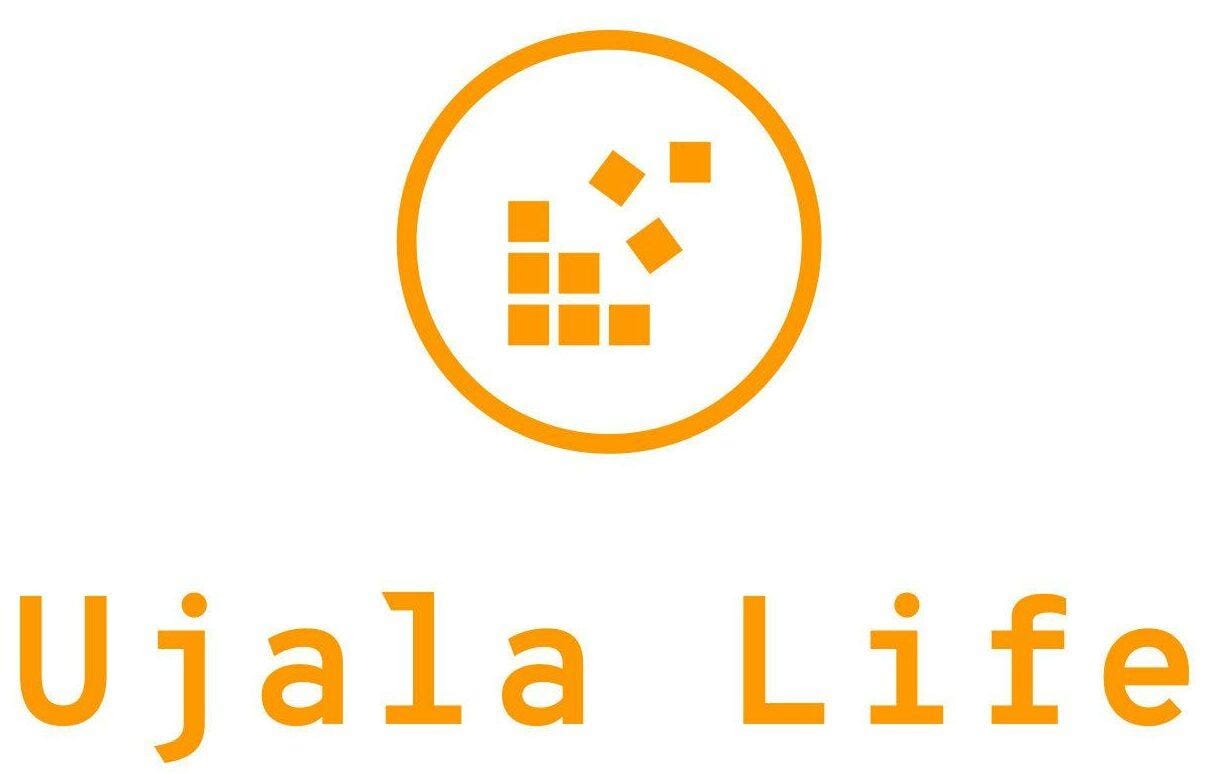Is ABA Therapy Harmful for your child? 7 Common Myths
Is ABA Therapy Harmful?
Parents of children diagnosed with Austism Spectrum Disorder (ASD) often ask their pediatricians “is ABA therapy harmful?”. Applied Behavior Analysis (ABA) therapy is a type of therapy that is commonly diagnosed to treat children with autism spectrum disorder (ASD). The therapy is based on the principles of behaviorism and involves breaking down complex behaviors into smaller, more manageable parts.
While ABA therapy has been praised as the gold-standard and most effective treatment of early childhood ABA, certain parents have had negative experiences. This is largely due to incorrect application of ABA, inappropriate application of ABA or under-trained professionals.
Why is Applied Behavior Analysis Harmful in Certain Settings?
Some parent’s experience with ABA therapy is negative, and has been criticized for being overly rigid, with therapists enforcing compliance instead of promoting individuality and self-expression.
ABA professionals are prone to hubris by treating all problem behaviors in isolation, without holistically assessing neurological, developmental, sensory or emotional underlying root causes. Creating effective treatment plans requires clinical maturity and exposure to other modalities of care.
Furthermore, many ABA agencies prioritize business efficiency over quality care. In our opinion, a few red flags to look out for include:
- BCBAs supervise more than 12 behavior therapists at once. While this is profitable, it can lead to poor quality care, as behavior therapists do not receive adequate support or direct training from experienced colleagues. Ujala Life BCBAs supervise no more than 8-10 behavior therapists simultaneously, and provide 1:1 training to their therapists even outside of standard billable hours.
- The agency only offers in-home care. While you may be tempted to conduct ABA therapy in-home as opposed to in a full-time clinic setting, this could impact the chances of success, as in-home therapists do not receive the same structured BCBA training and supervision they would in a clinic. Also, it may be harder to sanitize home spaces to address foundational skills for certain young learners under the age of 6.
- Behavior interventions rely heavily on Discrete Trial Training (DTT). DTT involves repetitive drilling that often occurs in a rigid space such as a desk, in order to build discrete skills. While this can be a highly effective technique for certain learners, many agencies over rely on this as it is easily replicable and efficient. This could be harmful as it can lead to both child and therapist burnout, and stifle more natural learning opportunities. At Ujala Life, we have a strong preference for child-led, play-based naturalistic approaches.
- Your child does not enjoy sessions. Having fun is the most effective way to learn. While it takes a few weeks for you child to pair with their therapist and get acclimatized to a new learning environment, ultimately if they do not smile and laugh in the clinic, you should be asking “is ABA therapy harmful?”
Please note that these are not hard and fast rules, but general rules of thumb to use when assessing the best aba therapy program near you.
ABA Therapy Is Considered The Gold Standard In Treating Autism
Every child with autism spectrum disorder is unique and not all need the same combination of treatments to make progress. Much depends on a child’s individual strengths and needs. What is generally the same across the board is that parents of children with ASD, like all parents, want their children to reach their highest potential.
Although many treatments claim to improve outcomes, applied behavior analysis (ABA) continues to be the first treatment recommended following a diagnosis of autism. Because it has been studied for decades and has the largest body of research to support its efficacy, it is considered the gold standard in autism treatment
Is ABA therapy harmful after a certain age?
The amount of time a child should attend ABA therapy can depend on a variety of factors. No single answer exists to answer this question for parents or caretakers of children with autism. The answer derives from how well a child fares in ABA therapy and whether or not the therapy actually works for him or her.
ABA therapy is designed to help children with autism achieve certain goals and milestones that are needed to live independently or semi-independently. They may learn how to brush their hair and teeth, for example. They may also learn how to sit quietly in a classroom setting or follow a short series of instructions to adapt to being in school on a full-time basis.
According to ABA therapy professionals, ABA therapy should be stopped when:
- When the child has completed 2-3 years of intensive therapy followed by 2-3 more years in a focused approach.
- When the primary objectives of the therapy have been reached.
- When the child doesn’t show the most common symptoms of autism.
- When progress has been slow or halted over months or years.
Many parents or caretakers initiate ABA therapy for their children in early childhood or when their children are in elementary school. This early intervention can ease the most challenging symptoms and behaviors associated with autism and allow children to learn to manage triggers like loud noises that can make everyday life more challenging to endure.
A variety of indicators can help parents, caretakers and therapist recognize when ABA therapy for children with autism should not be stopped. Some of these include:
- Children needing direct instruction for learning in a natural environment
- Parents, caretakers and teachers not being able to control problem behaviors without the intervention of a BCBA
- Parents, caretakers and teachers not being able to implement behavior or teaching plans effectively
- Children not benefiting from different educational environments
- Children not meeting goals in ABA therapy effectively and in a timely manner
- Children cannot adapt to or implement new behaviors in new environments with little to no teaching
- Lack of new skills emerging spontaneously without direct teaching or intervention
These indicators highlight the need for ABA therapy to continue for children with autism. Parents, caretakers and teachers of children with autism likewise may need therapy to continue so they can better care for and manage behaviors at home or in a classroom setting.
Determining whether or not these indicators exist or how well they are being met or overcome requires ABA therapists and parents or caretakers to meet regularly. They should review the therapy plan in place and make adjustments as needed to ensure ABA therapy can conclude when it is appropriate and safe.
Myth #1: ABA Therapy is harmful because it forces your child to sit long hours at a desk
It’s a common misconception that ABA therapy involves forcing children to sit for extended periods at a desk. While it’s true that some ABA programs may incorporate structured learning environments, this approach is not harmful when done correctly. In fact, structured learning can be highly effective for some children with autism.
At Ujala Life, we understand that every child is unique. Our ABA therapy programs prioritize individualized treatment plans. We avoid excessively long desk sessions and, instead, encourage a more balanced approach. Our therapists strive to create engaging learning environments that adapt to your child’s needs and preferences. We believe that learning can and should be enjoyable.
Myth #2: ABA Therapy is harmful because it encourages robotic, rote-learning

Another misconception about ABA therapy is that it promotes robotic, rote-learning. While ABA does involve repetitive tasks to teach specific skills, it is not intended to stifle a child’s individuality or creativity. ABA therapy focuses on breaking down complex behaviors into manageable steps, which can be beneficial for children with autism.
At Ujala Life, we emphasize a child-led, play-based naturalistic approach whenever possible. We believe in harnessing a child’s innate curiosity and interests to make learning enjoyable and meaningful. Our therapists are trained to strike a balance between structured teaching and fostering creativity, ensuring that your child’s unique personality shines through.
Myth #3: ABA Therapy is harmful because it uses bribery
There is a misconception that ABA therapy relies on bribery as a tool. While reinforcement is a fundamental concept in ABA, it’s crucial to understand the ethical principles that guide its application. ABA therapists use positive reinforcement, which means that desired behaviors are rewarded with meaningful incentives such as praise, tokens, or access to preferred activities. This positive approach helps children with autism develop new skills and behaviors in a supportive and encouraging environment. It’s a far cry from harmful punitive measures. At Ujala Life, we place a strong emphasis on the ethical practice of ABA, ensuring that your child’s therapy is based on evidence-based methods that promote their growth and well-being.
Myth #4: ABA Therapy is harmful because it involves punishment
There is a misconception that ABA therapy relies on negative reinforcement, such as punishment, to shape behavior. In fact, negative reinforcement is strongly discouraged in the field, especially when the same result can be achieved through positive reinforcement strategies. This myth stems from a misunderstanding of the principles of ABA. While reinforcement and consequences are used in ABA therapy, they are applied in a systematic and evidence-based manner.
At Ujala Life, we practice ethical ABA therapy. Our approach to reinforcement focuses on positive reinforcement, where desired behaviors are rewarded with meaningful incentives. We do not use punitive measures to correct behavior. Instead, we emphasize teaching and encouraging appropriate behaviors through positive means.
By dispelling these myths and understanding the core principles of ABA therapy, parents can make informed decisions about the best approach for their child’s unique needs.
Myth #5: ABA Therapy is harmful the therapists are under-trained
One of the concerns parents may have about ABA therapy is the competency of the therapists. However, at Ujala Life, we take extensive measures to ensure that our Registered Behavior Technicians (RBTs) receive the highest level of training and supervision. We maintain a low 8-10 BCBA (Board Certified Behavior Analyst) to BT (Behavior Technician) ratio, providing our therapists with the opportunity for extra supervision and guidance. This ensures that they are well-equipped to work with your child and implement effective therapy programs.
Moreover, our therapists benefit from being in a clinic-based setting, rather than solely providing in-home care. In-clinic environments offer structured training and supervision that may be lacking in home-based therapy. This structured approach helps our therapists develop their skills and deliver the best possible care to your child.
Additionally, we understand the importance of mentorship in the field of ABA therapy. That’s why we have scheduled mentorship time with our BCBAs, allowing our therapists to continually learn, grow, and refine their techniques. This ongoing support and training are essential in maintaining the highest standards of care for your child.
Rest assured that at Ujala Life, we prioritize the continuous education and professional development of our therapists to ensure they are well-prepared to provide effective, high-quality ABA therapy.
Myth #6: ABA Therapy is harmful because it fails to “cure” autism
It’s essential to debunk a common misconception about ABA therapy – the belief that it aims to “cure” autism. Autism is a neurodevelopmental condition, and as of today, there is no known cure. However, ABA therapy doesn’t seek to eliminate autism but rather to provide individuals with autism the tools and strategies they need to improve their quality of life. This approach is deeply rooted in the concept of “social significance,” where we prioritize meaningful and positive changes that hold importance in an individual’s daily life.
For instance, imagine a family whose child receives ABA therapy at Ujala Life. Instead of attempting to “cure” their child’s autism, our focus is on helping that child acquire vital communication skills. This can be transformative for the family as they witness their child making eye contact, expressing their needs, and engaging in meaningful interactions. These changes, though not a cure for autism, hold immense social significance for the family, leading to improved communication, reduced frustration, and a more connected and fulfilling family life. Our goal is to empower individuals and families with the tools they need to navigate the challenges of autism while celebrating each small but socially significant milestone along the way.
Myth #7: ABA Therapy is harmful because it suppresses neurodiversity and encourages compliance with “the neurotypical standard”
One prevalent misconception about ABA therapy is that it aims to erase autism and force individuals into a one-size-fits-all neurotypical mold. In reality, ABA therapy at Ujala Life has a very different purpose. Our focus is on helping neurodiverse children acquire essential life skills that enable them to participate fully in a world alongside their neurodiverse peers.
ABA therapy is not about attempting to “rinse the autism” out of every individual with autism spectrum disorder (ASD). Instead, we work to address practical barriers that may hinder neurodiverse children from thriving in various environments, including the classroom and beyond.
Our goal is to equip these children with the tools they need to communicate effectively, manage their behaviors, and navigate social situations successfully. By doing so, we empower them to engage meaningfully with their peers and society, enhancing their overall quality of life. Our approach respects and celebrates neurodiversity while recognizing that every child deserves the opportunity to develop the skills necessary for a fulfilling and inclusive life.
How Ujala Life practices ethical ABA
At Ujala Life, we are committed to providing ethical ABA therapy that prioritizes the well-being and individuality of each child. Our experienced BCBA supervisors ensure that therapy plans are tailored to your child’s specific needs and preferences. We limit the number of therapists supervised by each BCBA to ensure quality care and provide ongoing training and support.
We offer clinic-based therapy, with sensory stimuli to make learning a child-led adventure. Multiple skills in their program can be addressed simultaneously as your child plays and builds a relationship with their therapist and BCBA, as opposed to repetitive drilling of skills in isolation. That approach does not generalize beyond the clinic. We then work with you during parent training to continue developing these skills at home.
If you have concerns about ABA therapy or are looking for an ABA program that values your child’s uniqueness, consider Ujala Life. Our commitment to ethical ABA ensures that your child’s therapy experience is both effective and enriching. Find an ABA clinic near you
References
- https://childmind.org/article/controversy-around-applied-behavior-analysis/
- https://www.spectrumnews.org/features/deep-dive/controversy-autisms-common-therapy/
- https://www.appliedbehavioranalysisprograms.com/faq/controversy-surrounding-aba/
- https://circlecareservices.com/why-does-aba-therapy-get-a-bad-rap/
DISCLAIMER: THIS WEBSITE DOES NOT PROVIDE MEDICAL ADVICE
The information, including but not limited to, text, graphics, images and other material contained on this website are for informational purposes only. The content is not meant to be complete or exhaustive or to be applicable to any specific individual’s medical condition. No material on this website is intended to be a substitute for professional medical advice, diagnosis or treatment. If you have questions about a medical condition, always seek the advice of a physician or other qualified health care provider. Never disregard professional medical advice or delay in seeking it because of something you read on this website. No physician-patient relationship is created by this website or its use. Ujala Life assumes no duty to correct or update the website nor to resolve or clarify any inconsistent information that might be a part of the website.






